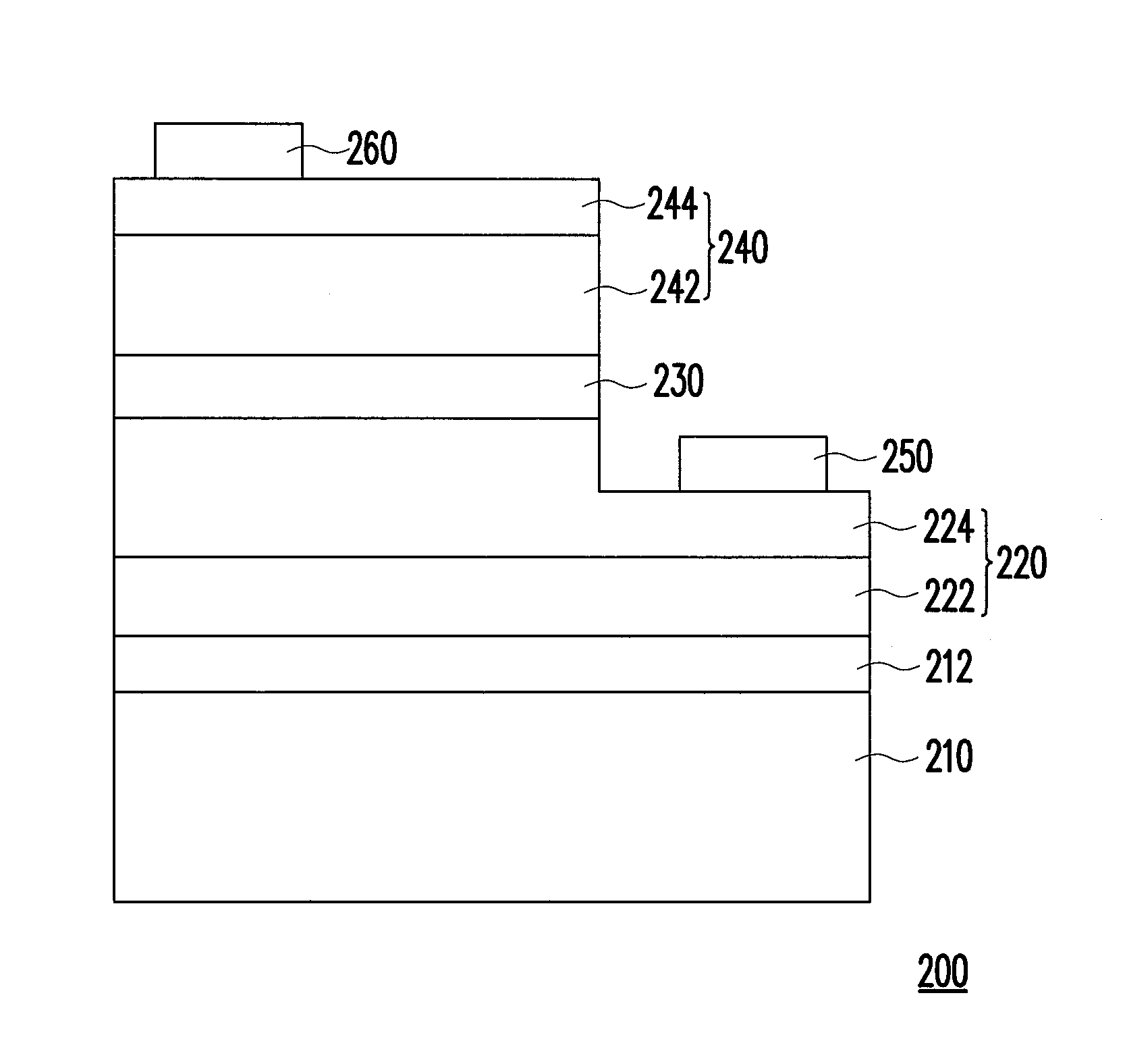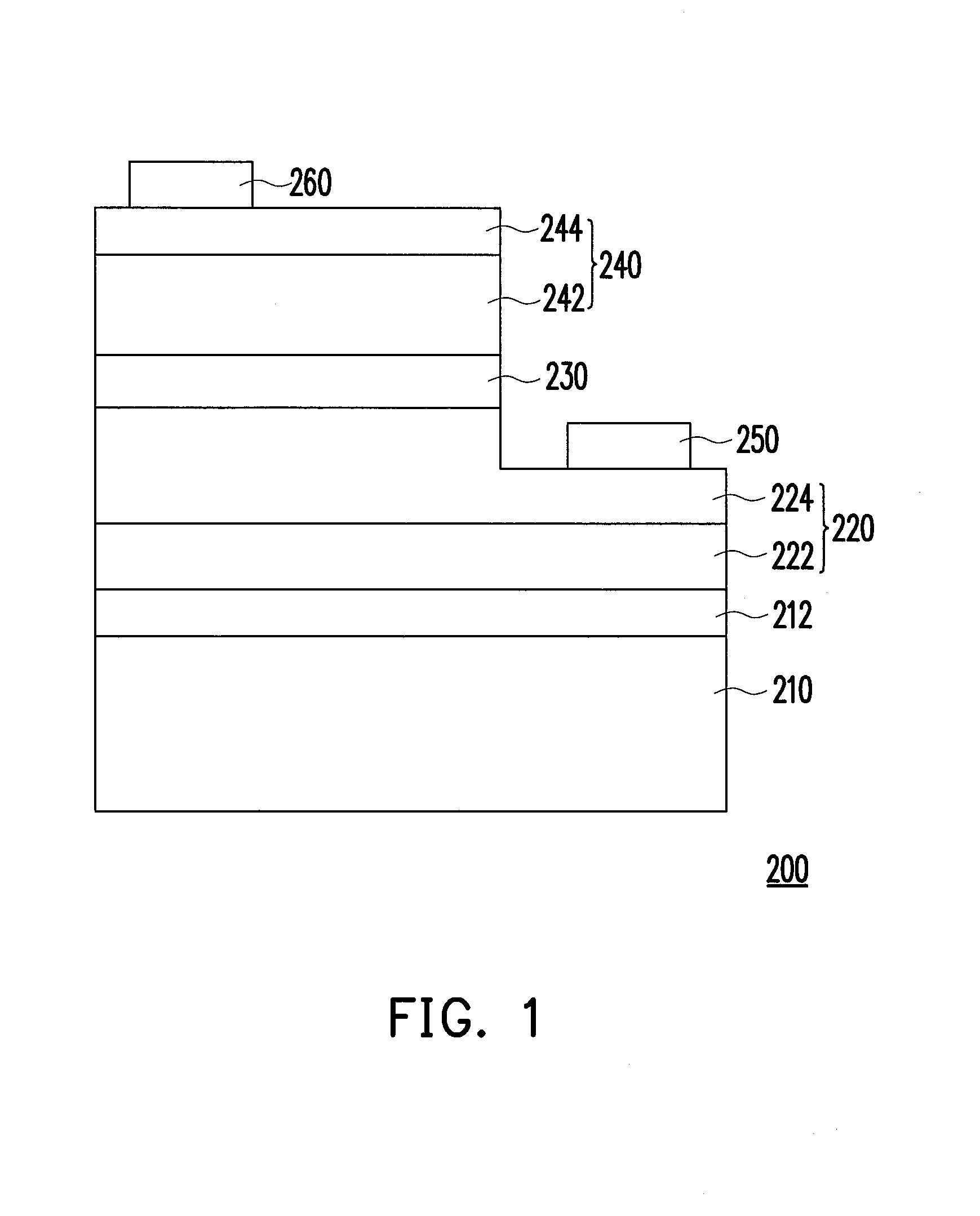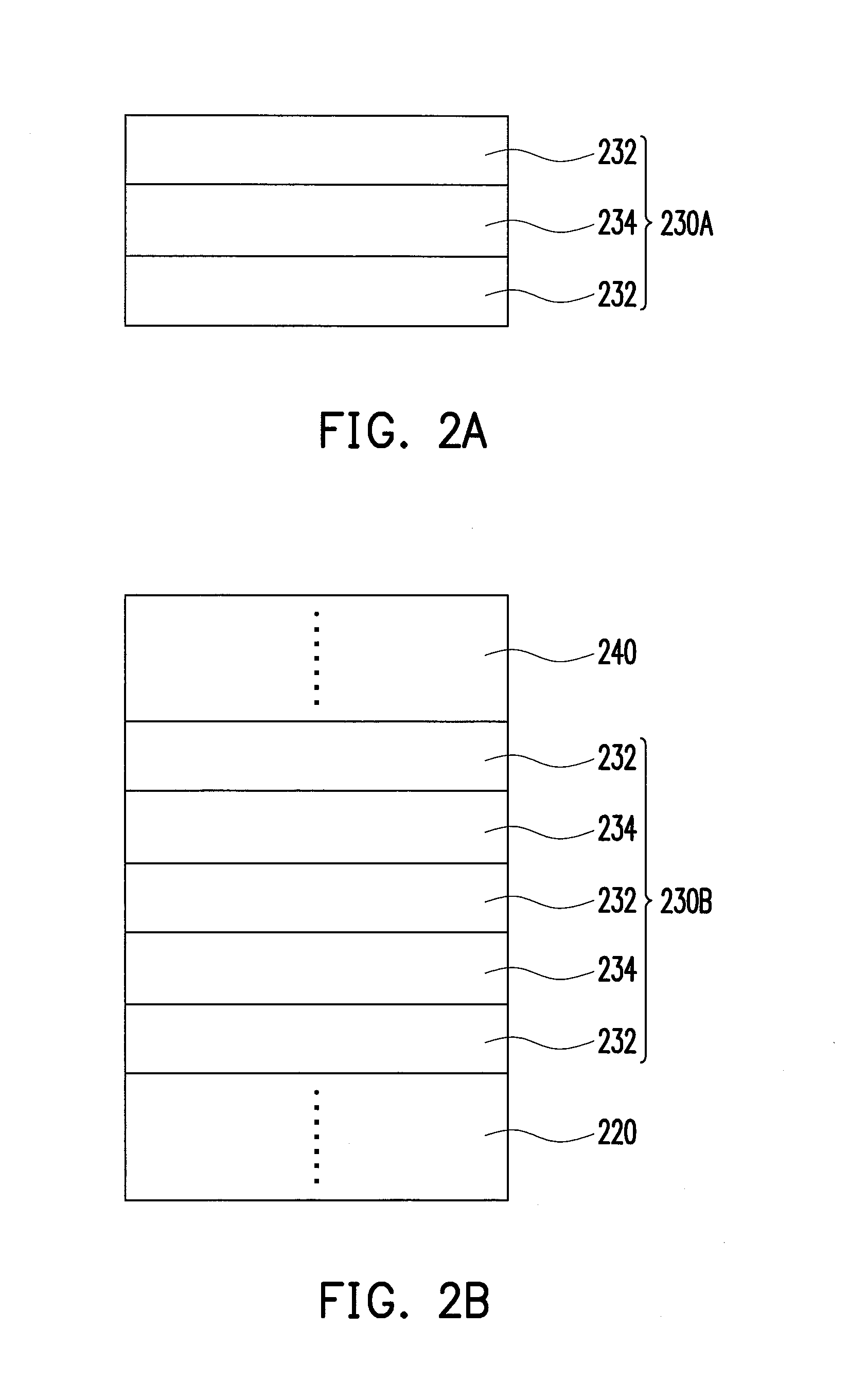Light emitting diode
a light-emitting diode and light-emitting technology, applied in the direction of basic electric elements, electrical equipment, semiconductor devices, etc., can solve the problems of inability to effectively achieve the radioactive recombination of electron-hole pairs and inability to evenly distribute into all quantum wells
- Summary
- Abstract
- Description
- Claims
- Application Information
AI Technical Summary
Benefits of technology
Problems solved by technology
Method used
Image
Examples
Embodiment Construction
[0024]Below, exemplary embodiments will be described in detail with reference to accompanying drawings so as to be easily realized by a person having ordinary knowledge in the art. The inventive concept may be embodied in various forms without being limited to the exemplary embodiments set forth herein. Descriptions of well-known parts are omitted for clarity, and like reference numerals refer to like elements throughout.
[0025]FIG. 1 is a schematic cross-sectional diagram illustrating an LED according to an exemplary embodiment.
[0026]With reference to FIG. 1, an LED 200 includes a substrate 210, an n-type semiconductor layer 220, an active layer 230, a p-type semiconductor layer 240, a first electrode 250, and a second electrode 260. The substrate 210 is, for instance, a sapphire substrate. Specifically, the stacking layers of a nitride semiconductor capping layer 212 (e.g. un-doped GaN), a n-type semiconductor layer 220, an active layer 230, the active layer 230 and the p-type semi...
PUM
 Login to View More
Login to View More Abstract
Description
Claims
Application Information
 Login to View More
Login to View More - R&D
- Intellectual Property
- Life Sciences
- Materials
- Tech Scout
- Unparalleled Data Quality
- Higher Quality Content
- 60% Fewer Hallucinations
Browse by: Latest US Patents, China's latest patents, Technical Efficacy Thesaurus, Application Domain, Technology Topic, Popular Technical Reports.
© 2025 PatSnap. All rights reserved.Legal|Privacy policy|Modern Slavery Act Transparency Statement|Sitemap|About US| Contact US: help@patsnap.com



